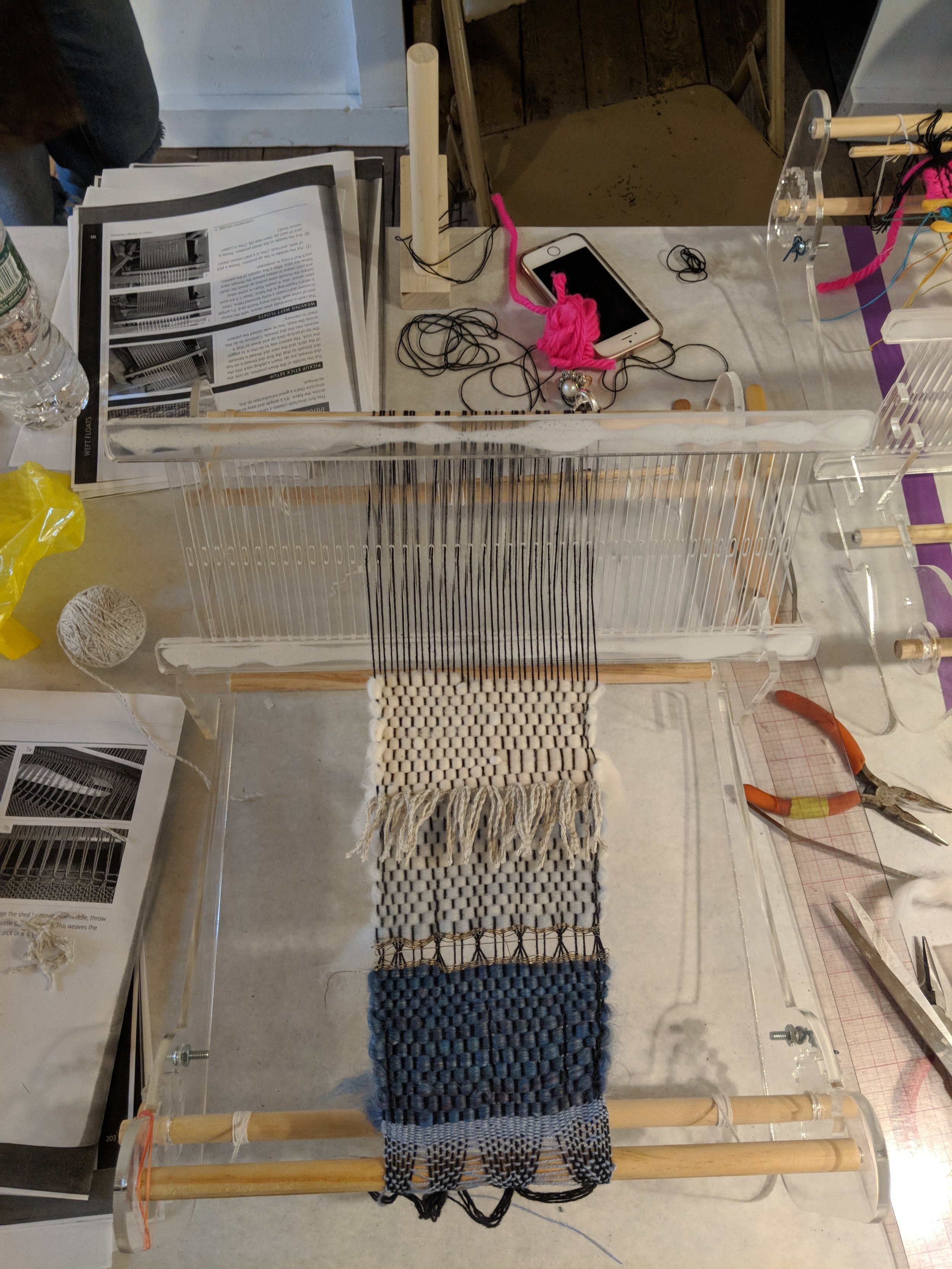eTextile Spring Break camp at The Wassaic Project
Last week I had the opportunity to meet with old friends, make new friends, geek out and jam together on e-textiles at a wonderful venue called The Wassaic Project in upstate NY, near a small town called Amenia. The eTextile Spring Break camp was a week-long event of communal living and making with fellow practitioners from the e-textile community.
The camp was organized by: Lara Grant, Liza Stark, Nicole Messier and Sasha de Koninck as a sister event to the eTextile Summer Camp that takes place every year in Paillard Centre d’Art at the Les Moulins de Paillard in France.
The participants were comprised by a magnificent group of talented individuals such as: Admar Schoonen, Adrian Freed, Afroditi Psarra, Alex Glow, Alice Giordani, Angela Sheehan, Audrey Briot, Becky Stewart, Ingo Randolf, Irene Posch, Lara Grant, Liza Stark, Martin De Bie, Nicole Messier, Pauline Vierne, Sam Topley, Sophie Skach and Teresa Lamb.
Read more here: http://etextilespringbreak.org/
The event kicked off with a series of skill-sharing workshops that spread through the course of the first three mornings:
Monday, April 2nd: Pressure and Sensing by Admar || eTextile Sound and Music by Adrian & Martin.
I attended the Sound and Music one, as I was already familiar with Admar's Resistive and Capacitive Sensing research.
Martin's textile pcb for the 555 timer chip in order to make a simple touch sensitive synth with only one capacitor.
Tuesday, April 3rd: Body to Body: RFID and PAN by Ingo and Nicole || Intro to Audio Processing with Bela by Becky - I attended the latter...
The Bela micro controller is a research project currently developed at Queen Mary University in London and it's comprised by a Beaglebone Black and a "Bela cape" on top. It's basically a Linux computer optimized for sound, to be embedded in novel musical interfaces. The Bela software consists of a web IDE which has all the documentation, as well as examples on how to use Bela using C++, PureData and/or SuperCollider.
Becky describing her experience working with the Bela microcontroller and showing her textile breakout for Bela.
Fabric breakout for Bela by Becky Steward.
Wednesday, April 4th: Weaving Intensive: Rigid Heddle Looms || Basics of Pattern Cutting || Thermochromics and Heating Circuits
For the Weaving Intensive workshop, Sasha de Koninck, had prepared these laser cut rigid heddle looms that we got to play around with.
My weaving in progress: trying to incorporate conductive thread and resistive yarns to the design. The bottom part with the gap design was made using Karl Grimm silver-plated thread that I later used to connect LEDs and the fringe is made with the SilverSpun resistive yarn from LessEMF.
On the first day we had a show and tell of the exhibition pieces we brought with us, introducing our work to the rest of the participants, that was followed by a panel discussion on the camp's theme: Revel in The (Un)Ravel.
Irene Posch showing some notes taken during the Topic Discussion on the future of electronic crafts.
On the second day, we separated into four different focus groups: Hard Privacy in a Soft World, Your Wildest Speculative Fantasy, Community Threads and Revel Off The Grid.
I was part of the Revel Off the Grid group, together with Lara Grant, Adrian Freed, Sam Topley and Nicole Messier - which after brainstorming for a couple of days and nerding out on off the grid technologies, networks and perception, decided to work on short-range FM radio circuits as a communication method for an e-textiles performance setting. In an off-the-grid move we decided to work on radio circuits using the 555 timer IC with Adrian's lego breakout board (which he initially had prepared for his Sound workshop), with just an electret mic (or piezo element) for voice transmission.
After getting hands-on with the circuitry we spent some time looking at papers with numerous antenna designs so we could maximize our radios' sensitivity and distance.
Adrian also built an AM transmitter using a GEMMA M0 micro controller - which is equipped with an analog out pin which was outputing a fun tone melody.
Sam started off by building an AM receiver which had a 300turns inductor - we didn't manage to tune the circuit to pick up the transmission, but I think it was a matter of having more time to explore that further.
On Saturday, April 9th we had the focus groups presentations in the morning, where each group presented their projects and talked about their process and in the afternoon we had the Social Day, with an exhibition opening - showing the works that we brought with us to the camp, plus the new that we developed there.
Pauline Verne's #WickedFabrics community shirt from the last day presentations at the Wassaic Project.
Popular activities of the Social day included an e-broidery workshop by Liza Stark, felted stud-making by Ingo Randolf and knitted selfies by Audrey Briot.
Before leaving we made small swatchbooks of the materials we had available at the camp.
And Irene Posch gave me some supplies to make more of her e-textile tools for the DXARTS SoftLab! :)














